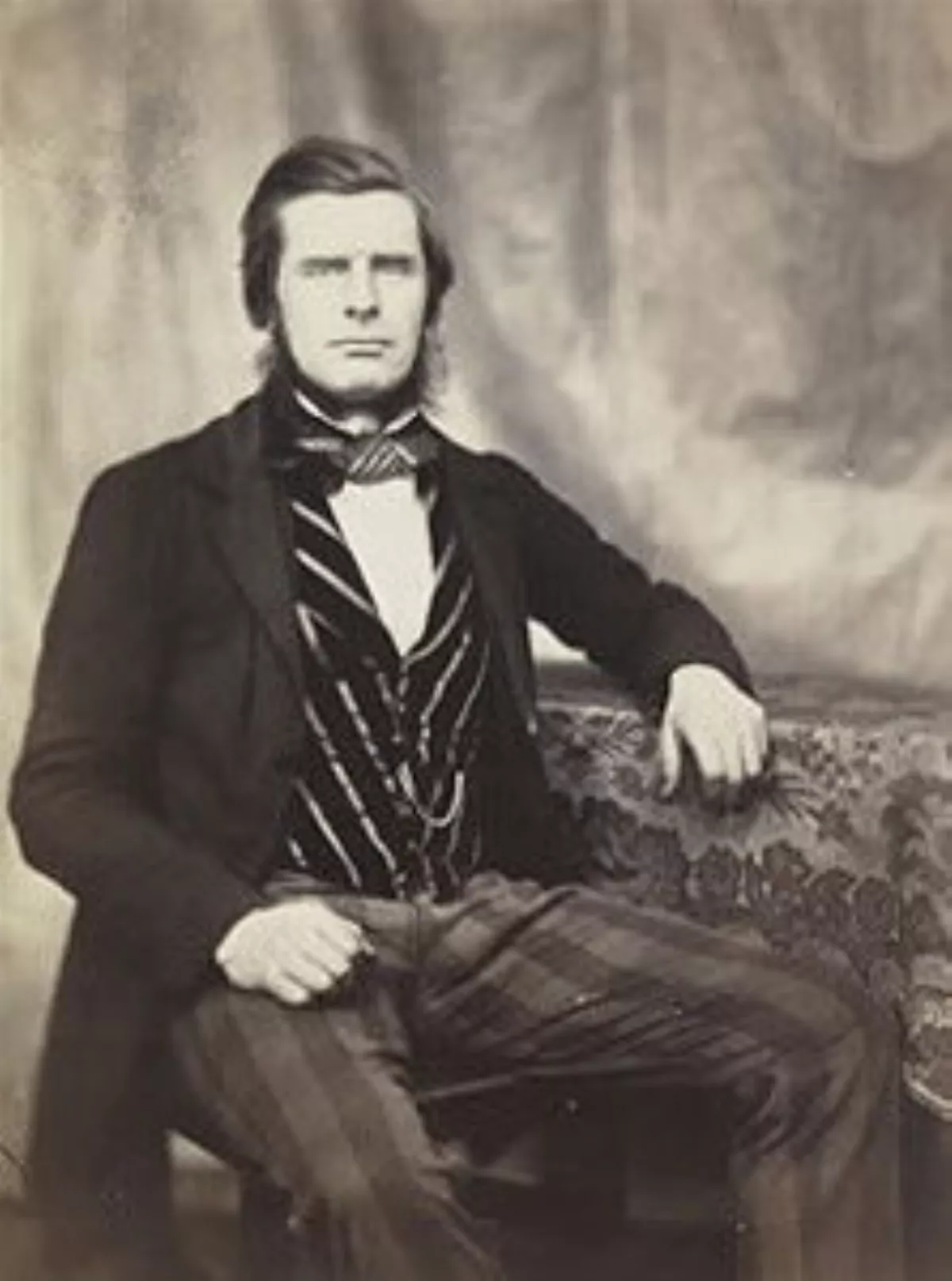 1.
1. Roger Fenton was a British photographer, noted as one of the first war photographers.

 1.
1. Roger Fenton was a British photographer, noted as one of the first war photographers.
Roger Fenton became a leading British photographer and was instrumental in founding the Photographic Society.
Roger Fenton's grandfather was a wealthy cotton manufacturer and banker, whilst his father, John, was a banker and from 1832 a member of parliament.
Roger Fenton was the fourth of seven children by his father's marriage to Elizabeth Apedaile, his first wife.
Roger Fenton's father remarried after her death and had 10 more children by his second wife.
In 1840 Roger Fenton graduated with a "first class" Bachelor of Arts degree from the University of London, having read English, mathematics, Greek and Latin.
In Yorkshire in 1843 Roger Fenton married Grace Elizabeth Maynard, presumably after his first sojourn in Paris, where he may briefly have studied painting in the studio of Paul Delaroche.
In 1849,1850 and 1851 Roger Fenton exhibited paintings in the annual exhibitions of the Royal Academy.
Roger Fenton visited the Great Exhibition in Hyde Park in London in 1851 and was impressed by the photography on display there.
Roger Fenton visited Paris to learn the waxed paper calotype process, most likely from Gustave Le Gray, who had modified the methods employed by William Henry Fox Talbot, its inventor.
Roger Fenton travelled to photograph Kiev, Moscow and St Petersburg, and photographed views and architecture around Britain.
Roger Fenton established an open-air studio on the museum's roof.
Queen Victoria commissioned Roger Fenton to produce a series of royal portraits in 1854.
In 1852, in collaboration with commercial photographer Antoine Claudet, Roger Fenton published a manifesto: Proposal for the Formation of a Photographic Society.
In 1980, the RPS instituted the 'Roger Fenton Medal' awarded to three or four members of the RPS each year, to acknowledge those members' extraordinary service to the Society.
Roger Fenton took Marcus Sparling as his photographic assistant, a servant known as William, and a large horse-drawn van of equipment.
Roger Fenton avoided taking pictures of dead, injured or mutilated soldiers.
Roger Fenton photographed the landscape, including an area near to where the Charge of the Light Brigade took place.
Roger Fenton titled it as The Valley of the Shadow of Death, with a deliberate evocation of Psalm 23.
Roger Fenton identified the small valley, shown on a later map as "The Valley of the Shadow of Death", as the place where Fenton had taken his photograph.
Roger Fenton had taken two pictures of this area, one with several cannonballs on the road, the other with an empty road.
Roger Fenton remains uncertain about why balls were moved onto the road in the second picture: perhaps, he notes, Fenton deliberately placed them there to enhance the image.
Roger Fenton showed them to Queen Victoria and Prince Albert and to Emperor Napoleon III in Paris.
Roger Fenton was in conflict with the Photographic Society, who believed that no photographer should soil himself with the 'sin' of exploiting his talent commercially in any manner.
Roger Fenton's are almost certainly the earliest images of the building, and the only photographs showing the incomplete Clock Tower.
In 1858 Roger Fenton made studio genre studies based on romantically imaginative ideas of Muslim life, such as Seated Odalisque, using friends and models who were not always convincing in their roles.
Roger Fenton moved with his remaining family from Albert Terrace, Regent's Park to Potters Bar, Middlesex, perhaps for healthier air.
Roger Fenton died there at age 50 on 8 August 1869 after a week-long illness.
In 2005,90 of Roger Fenton's images were included in a special exhibition devoted to this "most important nineteenth-century photographer" at the Tate Britain gallery, London.
In 2007, Roger Fenton was inducted into the International Photography Hall of Fame and Museum.